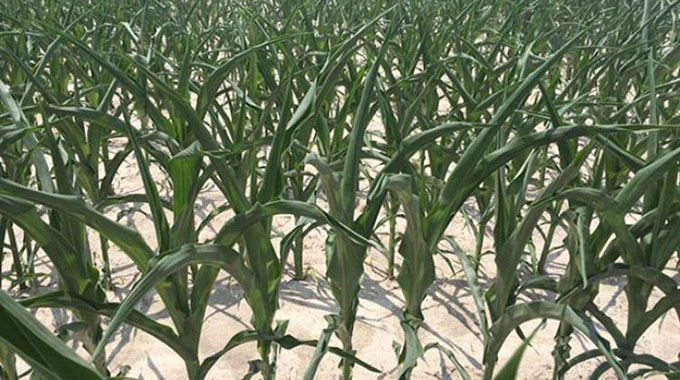
The Rhodesia Herald, 6 January 1966
The poor rainfall so far this season has seriously prejudiced maize crops in many parts of the country.
In the badly drought-stricken areas, such as Matabeleland, Midlands and the Western part of Mashonaland South Province, crop failures are virtually complete.
Advice to farmers in the affected areas who want to know what to plant in anticipation of late rains is given by the Chief Agronomy Extension Officer, Mr J. Harper.
Further maize planting, is of course, out of the question, but there is still a short period left — only ten days or so — in which it will be worthwhile to sow early maturing varieties of sorghums such as Feterita and Red Swazi. The former takes about 60 days to flower and the latter 58.
Red Swazi is acceptable for malting purposes and thus qualifies for the special “S” grade price of 39s. 6d. per 200lb. bag. It is too late now to plant the other “S” grade variety called Framida.
The Grain Marketing Board in Salisbury has railed 130 bags of Red Swazi grain to its depot in Gatooma to help farmers in that general area who want to plant sorghums, and the Salisbury farmers’ Co-op has arranged to supply its Gatooma branch with Feterita seed.
Seeding rate should be 12 to 15lb per acre with a spacing of 18 to 21 inches between rows.
The optimum time for planting hybrid grain sorghums is now past, because they too, like Framida take much longer than Feterita and Red Swazi to reach maturity.
It is worth repeating that farmers have only until January 10 or 12 in which to plant Feterita and Red Swazi varieties with a reasonable chance of success.
Sorghums like heavy, fertile soils. They do not do well on sands, and sandy loams.
The amounts of phosphorous and potash needed by sorghums are approximately the same as those required by maize; nitrogen application can be scaled down by about 50 to 60 percent in all areas.
LESSONS FOR TODAY
- Farmers need to be pro-active when faced with a season that has erratic rainfall patterns.
- Small grains are the way to go for farmers as relying on traditional crops like maize can have devastating effects when faced with low rainfall patterns. They can also grow them
- If they are to go for maize, farmers must sow early maturity varieties.
- Farmers need to be educated on what measures to take when faced with uncertainty due to erratic rainfall.
- Indigenous Knowledge Systems (IKS) are critical in combatting the vagaries of climate change, and it’s time that this is taken into consideration.
